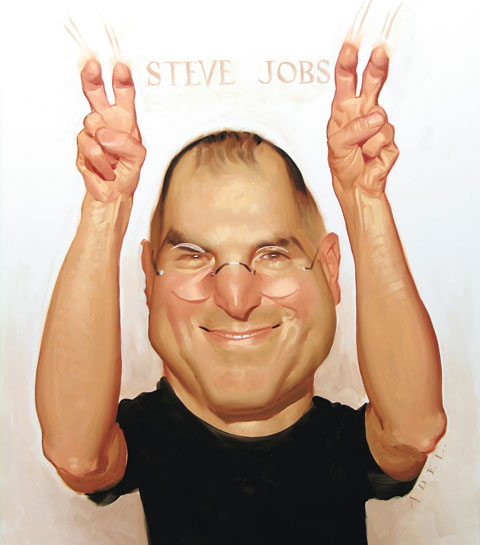What is 4G?
I can see heavy confusion on what is 4G? So thought to make a blog post about it.
Some people even feel like….

:) Let’s try to understand from basic definition about 4G.
As per ITU - 4G refers to wireless technologies which gives as fast as 1Gbps speeds when one is stationary, while 100Mbps speeds when one is on move. That’s it. Full stop.
1Gbps!!! Really?
Well, that’s “just in defination”. In real - there is no technology which is real 4G.
So what is WiMax?
Well WiMax is yet another technology which enables wireless broadband. WiMax comes in two flavors - fixed wimax 802.16d and mobile wimax 802.16e. Fixed WiMax is available from long time. As per its name - “it’s fixed!”. It needs a clear “line of sight”. It works quite good as “alternate to DSL” in Rural areas where demand is very low. It’s also more suited for Rural environment because of easy line of sight clearance, apart from very long distance links (as long as 40Km’s). What WiMax we hear these days (the one which is operated by ClearWire in US, for carriers like Sprint, and BSNL wimax in India) that’s “mobile wimax”. It’s a totally different technology then fixed wimax, and both share “almost” nothing other then “name” wimax. It’s one of technologies heavily backed by Intel - who considered it as an alternate to Wifi covering whole city with just a couple of hotspots. Intel’s dream was much like having WiMax in way we see WiFi, though it seems it failed. Have a look at this promo video:
So how much speeds WiMax supports? Is that 1Gbps?!!
Mmm…NO! (not even in theory).
Current version of mobile wimax supports peak (read it theoritical) speeds of somewhere around 70Mbps. (no way close to 1Gbps)

What about LTE?
Well that’s one of other popular wireless technology. One must note that LTE is an upgrade from GSM > GPRS/EDGE > HSDPA > HSPA+ > LTE…
meaning it is not directly related to (wireless) broadband, but it’s an evolution from cell phone technologies. That’s one of prime reasons of why people call these as 4G technology. Present LTE standard too does not support 1Gbps of speeds, and so it’s also NOT the real 4G.
So what’s the real 4G?
Well till now - there is no commercially available technology which can support “real 4G” speeds. Recently NTT DoCoMo did tests for Advanced LTE, and it seems that might come as real 4G. In case WiMax, an advanced version 802.16m might be real 4G, but that has years to come!
But till now all operators are just calling their own technology as 4G.
In US , firstly Sprint came with mobile wimax based network (running over ClearWire's. It gives average downlink speeds of somewhere around 4-5Mbps, which is far away from 4G standard. Next, AT&T and T-mobile upgraded their 3G network to HSPA+ which supports peak speeds of 21Mbps and they call it “almost 4G network”. Next, Verizon came up with their “4G LTE network” which supports real world speeds of somewhere between 5-12Mbps. One remarkable thing here was - Verizon is atleast giving real world speeds in their claim. Wireless broadband ads are all full of “peak” theoretical speeds while at the end users just get hardly 1/5th of that (on a lucky day).
A few interesting facts:
- If AT&T and T-mobile keep on calling their network as 4G, all Indian telecos can call their new network too as 4G as they are also deploying HSPA+ (right from start).
- In rough and more real sense HSPA+ is considered to be 3.5G. They give end user a speed from 3-5Mbps which is definitely good for mobile broadband.
- In real mobile WiMax & LTE (current standard) is 3.9G - a way to 4G. That’s why they call it as Long Term Evolution :)
- Even if LTE advanced comes into picture, we still need really big slot of spectrum. These technologies are mostly about how efficiently we are using limited spectrum.
- If DSL players start claiming “peak” speeds in their ads, then expect BSNL banner saying - “24Mbps for just 150Rs/month” :P :) and FTTH - Fiber to home deployments will go as high as “1.6Tbps of peak speeds just for $60 a month”! :D
- Even FTTH players like Verizon FiOS are yet not giving 1Gbps speeds. Issue remains with capacity and overall demand. (who really needs that much bandwidth today?)
- LTE is in picture from many years but development was very slow till mid of 2010. Reason remains high cost of building new infrastructure, and not really any significant demand.
- In India Reliance Infotel is expected to launch wireless broadband over TD-LTE in middle of this year. You should be excited about it - considering fact that Infotel is only player which holds pan India spectrum for BWA, apart from fact that it’s return of billionare Mukesh Ambani in communications industry.
So stop using word “4G” unless you can really download 1G of data in 8 seconds!
Fun fact: I am making this post after hearing from a friend that iPhone 4 is never going to launch in India since we don’t have 4G!
